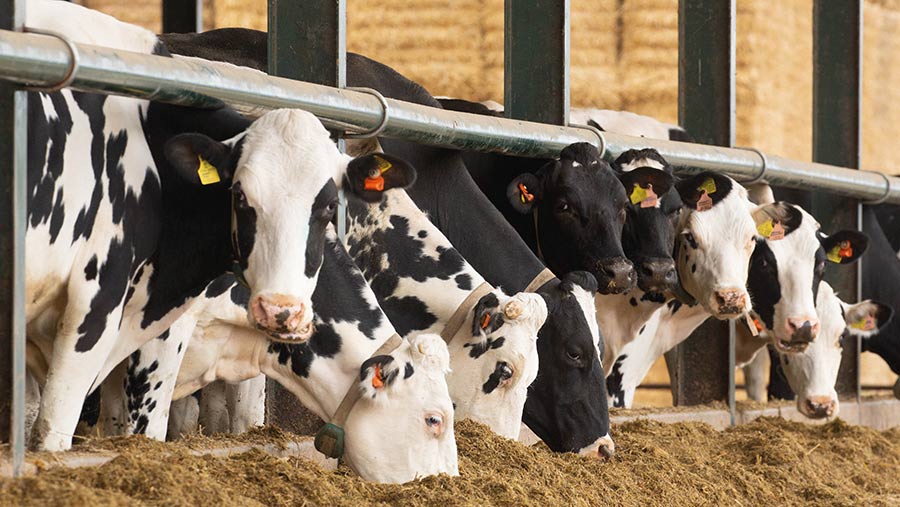High-yielding herds top efficiency stakes – but beware of low fertility
 © Tim Scrivener
© Tim Scrivener High-yielding dairy herds are more feed-efficient than low-yielding herds, but improvements must be made in cow fertility and longevity to lower methane emissions.
A study of 21 farms across five systems, varying from more than nine months grazed to fully housed, assessed the whole-farm feed efficiency for all animals.
It found average whole-farm feed efficiency increased as grazing time decreased across systems, although there was huge variation within systems.
See also: Advice on observing housed cows to improve dairy sheds
Factors that can improve feed efficiency
- Increase milk output/ha
- Improve quality of forage or grazed grass
- Increase stocking rate or milk yield a cow
- Reduce feed wastage
- Manage of youngstock to reach age and weight targets to calve at two
- Maximise fertility and health to improve your replacement rate
Phil Garnsworthy, professor of dairy science at the University of Nottingham, who carried out the research, said: “Higher-yielding cows partition a greater proportion of energy to milk and you [have] much better control of your feed inputs when you house cows.
“[This is because] with a grazing system you get under-utilisation of grass at different times of the year.”
The main driver of efficiency was milk output/ha, he said.
The effect of poor fertility
Although methane levels reduce the more milk is produced, fertility can undo this, he cautioned.
Historically, there has been a negative correlation between milk yield and fertility, with pregnancy rate to first service declining over the years, said Prof Garnsworthy.
Poor fertility directly increases a farm’s replacement rate and affects the lifetime efficiency of an animal.
Furthermore, feed demand for heifers rises from 16% to 44% if the replacement rate increases from 20% to 45%.
Fertility and lifetime efficiency |
|||
|
|
Three lactations |
Four lactations |
Improvement |
|
Milk production (t) |
22.7 |
28.9 |
+27% |
|
Methane (MJ/litre) |
1.72 |
1.53 |
-13% |
Prof Garnsworthy explained: “The higher the replacement rate and the longer it takes before first calving, the less efficient the herd. Feed and methane costs of rearing are spread over fewer kilogrammes of milk.
“It takes one-and-a-half lactations to pay back heifer rearing costs. A lot of these cows will be culled in the first lactation, and they will never have made a profit at all.”
He concluded: “We can get a huge reduction in methane by going for high-yielding cows, but not if it affects fertility. I’m not suggesting we house all cows [because] we can improve efficiency in all systems by boosting fertility.”
Phil Garnsworthy was speaking at the 2023 British Cattle Breeders Conference on 25 January.
